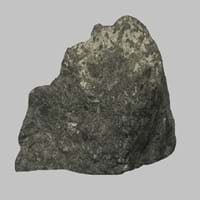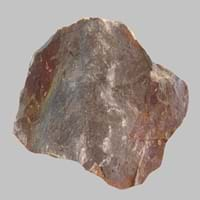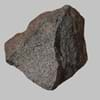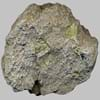Definition
Phonolite is an uncommon extrusive igneous rock volcanic rock of intermediate chemical composition between felsic and mafic
Hawaiite is volcanic rock that resembles basalt. It is an olivine basalt with intermediate composition between alkali olivine and mugearite
Origin
Unknown
Hawaii Islands
Discoverer
Unknown
Joseph Iddings
Etymology
From the Greek meaning sounding stone because of the metallic sound it produces if an unfractured plate is hit
From Hawaii Islands
Class
Igneous Rocks
Igneous Rocks
Sub-Class
Durable Rock, Medium Hardness Rock
Durable Rock, Medium Hardness Rock
Group
Not Applicable
Volcanic
Other Categories
Fine Grained Rock, Opaque Rock
Opaque Rock
Texture
Granular
Glassy, Massive, Porphyritic, Scoriaceous, Vesicular
Color
Brown, Buff, Cream, Green, Grey, Pink, White
Black, Brown, Light to Dark Grey
Durability
Durable
Durable
Scratch Resistant
Yes
Yes
Appearance
Banded and Foilated
Dull and Soft
Interior Uses
Countertops, Decorative Aggregates, Flooring, Homes
Decorative Aggregates, Floor Tiles, Flooring, Homes, Hotels, Interior Decoration, Kitchens
Exterior Uses
As Building Stone, As Facing Stone, Garden Decoration, Office Buildings, Paving Stone
As Building Stone, As Facing Stone, Paving Stone, Garden Decoration, Office Buildings
Other Architectural Uses
Curbing
Curbing
Construction Industry
As Dimension Stone, Cement Manufacture, Construction Aggregate, for Road Aggregate, Landscaping, Making natural cement, Manufacture of Magnesium and Dolomite Refractories, Production of Glass and Ceramics
As Dimension Stone, Cobblestones, Rail Track Ballast, Roadstone
Medical Industry
Not Yet Used
Not Yet Used
Antiquity Uses
Artifacts, Monuments, Sculpture
Artifacts
Commercial Uses
Cemetery Markers, Creating Artwork
Creating Artwork, Sea Defence
Types
Kenyte
Not Available
Features
Application of acids on the surface causes cloudy frosting, Available in Lots of Colors and Patterns, Dissolves in hydrochloric acid, Is one of the oldest rock
Has High structural resistance against erosion and climate, Very fine grained rock
Archaeological Significance
Famous Monuments
Data Not Available
Easter Island in the Polynesian Triangle, Pacific Ocean
Sculpture
Used
Not Yet Used
Famous Sculptures
Data Not Available
Not Applicable
Figurines
Used
Not Yet Used
Formation
Phonolite are formed due to alkaline igneous activities and are generally formed in thick continental crustal areas or in Cordilleran subduction zones.
Hawaiite is a fine-grained, hard rock that forms when bits of lava shoot out of volcanoes and reach the Earth's surface.
Mineral Content
Albite, Amphibole, Biotite, Cancrinite, Feldspar, Hornblende, Plagioclase, Pyroxene, Sodalite
Olivine, Plagioclase, Pyroxene
Compound Content
Aluminium Oxide, CaO, Iron(III) Oxide, FeO, Potassium Oxide, MgO, MnO, Sodium Oxide, Phosphorus Pentoxide, Silicon Dioxide, Titanium Dioxide
Aluminium Oxide, CaO, Iron(III) Oxide, FeO, Potassium Oxide, MgO, MnO, Sodium Oxide, Phosphorus Pentoxide, Silicon Dioxide, Titanium Dioxide
Types of Metamorphism
Contact Metamorphism
Impact Metamorphism
Types of Weathering
Chemical Weathering, Mechanical Weathering
Biological Weathering
Types of Erosion
Chemical Erosion, Coastal Erosion, Water Erosion, Wind Erosion
Not Applicable
Grain Size
Fine Grained
Not Applicable
Fracture
Conchoidal to Uneven
Conchoidal
Streak
White
Not Available
Porosity
Less Porous
Less Porous
Luster
Greasy to Dull
Not Available
Cleavage
Poor
Not Applicable
Toughness
Not Available
Not Available
Specific Gravity
2.6
Not Available
Transparency
Translucent to Opaque
Opaque
Density
2.6 g/cm3
Not Available
Resistance
Heat Resistant, Impact Resistant, Wear Resistant
Heat Resistant, Pressure Resistant, Wear Resistant
Deposits in Eastern Continents
Asia
Indonesia, Iran, Russia, Saudi Arabia, Sri Lanka, Taiwan, Thailand, Turkey, Turkmenistan, Vietnam
India, Russia
Africa
Angola, Egypt, Madagascar, Namibia, Nigeria, South Africa
South Africa
Europe
Andorra, Finland, France, Germany, Great Britain, Italy, Norway, Portugal, Spain, Sweden
Iceland
Others
Greenland
Hawaii Islands
Deposits in Western Continents
North America
Canada, USA
Canada, USA
South America
Brazil, Chile, Colombia, Uruguay, Venezuela
Brazil
Deposits in Oceania Continent
Australia
New Zealand, Queensland, South Australia, Tasmania, Western Australia
Not Yet Found
Phonolite vs Hawaiite Characteristics
Though some rocks look identical, they have certain characteristics which distinguish them from others. Characteristics of rocks include texture, appearance, color, fracture, streak, hardness etc. Phonolite vs Hawaiite characteristics assist us to distinguish and recognize rocks. Also you can check about Properties of Phonolite and Properties of Hawaiite. Learn more about Phonolite vs Hawaiite in the next section. The interior uses of Phonolite include Countertops, Decorative aggregates, Flooring and Homes whereas the interior uses of Hawaiite include Decorative aggregates, Floor tiles, Flooring, Homes, Hotels, Interior decoration and Kitchens. Due to some exceptional properties of Phonolite and Hawaiite, they have various applications in construction industry. The uses of Phonolite in construction industry include As dimension stone, Cement manufacture, Construction aggregate, For road aggregate, Landscaping, Making natural cement, Manufacture of magnesium and dolomite refractories, Production of glass and ceramics and that of Hawaiite include As dimension stone, Cobblestones, Rail track ballast, Roadstone.
More about Phonolite and Hawaiite
Here you can know more about Phonolite and Hawaiite. The life cycle of a rock consists of formation of rock, composition of rock and transformation of rock. The composition of Phonolite and Hawaiite consists of mineral content and compound content. The mineral content of Phonolite includes Albite, Amphibole, Biotite, Cancrinite, Feldspar, Hornblende, Plagioclase, Pyroxene, Sodalite and mineral content of Hawaiite includes Olivine, Plagioclase, Pyroxene. You can also check out the list of all Igneous Rocks. When we have to compare Phonolite vs Hawaiite, the texture, color and appearance plays an important role in determining the type of rock. Phonolite is available in brown, buff, cream, green, grey, pink, white colors whereas, Hawaiite is available in black, brown, light to dark grey colors. Appearance of Phonolite is Banded and Foilated and that of Hawaiite is Dull and Soft. Properties of rock is another aspect for Phonolite vs Hawaiite. The hardness of Phonolite is 5.5-6 and that of Hawaiite is 6. The types of Phonolite are Kenyte whereas types of Hawaiite are Not Available. Streak of rock is the color of powder produced when it is dragged across an unweathered surface. The streak of Phonolite is white while that of Hawaiite is not available. The specific heat capacity of Phonolite is Not Available and that of Hawaiite is Not Available. Depending on the properties like hardness, toughness, specific heat capacity, porosity etc., rocks are resistant to heat, wear, impact, etc.Phonolite is heat resistant, impact resistant, wear resistant whereas Hawaiite is heat resistant, pressure resistant, wear resistant.





